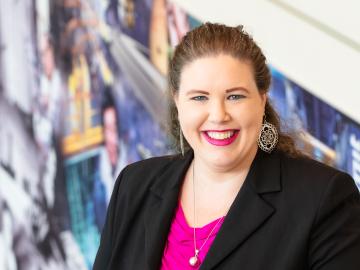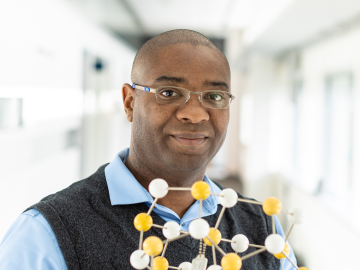
Filter News
Area of Research
- (-) Fusion Energy (8)
- (-) Materials (68)
- (-) Neutron Science (15)
- Advanced Manufacturing (9)
- Biological Systems (1)
- Biology and Environment (25)
- Building Technologies (1)
- Clean Energy (79)
- Climate and Environmental Systems (1)
- Computational Biology (1)
- Computational Engineering (2)
- Computer Science (12)
- Electricity and Smart Grid (2)
- Functional Materials for Energy (2)
- Fusion and Fission (5)
- Isotopes (7)
- Materials Characterization (2)
- Materials for Computing (13)
- Materials Under Extremes (1)
- Mathematics (1)
- National Security (6)
- Nuclear Science and Technology (6)
- Nuclear Systems Modeling, Simulation and Validation (1)
- Quantum information Science (4)
- Sensors and Controls (1)
- Supercomputing (31)
- Transportation Systems (2)
News Type
News Topics
- (-) Advanced Reactors (9)
- (-) Bioenergy (6)
- (-) Biomedical (4)
- (-) Computer Science (8)
- (-) Grid (1)
- (-) Isotopes (4)
- (-) Materials (38)
- (-) Materials Science (35)
- (-) Security (1)
- (-) Summit (1)
- (-) Transportation (10)
- 3-D Printing/Advanced Manufacturing (12)
- Artificial Intelligence (4)
- Biology (4)
- Buildings (2)
- Chemical Sciences (12)
- Clean Water (1)
- Climate Change (3)
- Composites (5)
- Coronavirus (1)
- Critical Materials (6)
- Cybersecurity (3)
- Decarbonization (2)
- Energy Storage (18)
- Environment (6)
- Frontier (3)
- Fusion (9)
- High-Performance Computing (2)
- Irradiation (1)
- ITER (1)
- Machine Learning (2)
- Microscopy (14)
- Molten Salt (2)
- Nanotechnology (19)
- National Security (1)
- Neutron Science (33)
- Nuclear Energy (9)
- Partnerships (2)
- Physics (7)
- Polymers (8)
- Quantum Computing (2)
- Quantum Science (4)
- Simulation (1)
- Space Exploration (3)
- Sustainable Energy (7)
- Transformational Challenge Reactor (1)
Media Contacts

Rigoberto Advincula, a renowned scientist at ORNL and professor of Chemical and Biomolecular Engineering at the University of Tennessee, has won the Netzsch North American Thermal Analysis Society Fellows Award for 2023.

Nonfood, plant-based biofuels have potential as a green alternative to fossil fuels, but the enzymes required for production are too inefficient and costly to produce. However, new research is shining a light on enzymes from fungi that could make biofuels economically viable.

Anne Campbell, an R&D associate at ORNL, has been selected for an Emerging Professional award from ASTM International. ASTM, formerly the American Society for Testing and Materials, is an international standards organization that develops and publishes voluntary consensus technical standards for a wide range of materials, products, systems and services.

Valentino “Tino” Cooper, a scientist at ORNL, has been appointed to DOE’s Basic Energy Sciences Advisory Committee for a three-year term. Cooper’s research elucidates the fundamental understanding of advanced materials for next-generation energy and information technologies.

Andrew Lupini, a scientist and inventor at ORNL, has been elected Fellow of the Microscopy Society of America.

Warming a crystal of the mineral fresnoite, ORNL scientists discovered that excitations called phasons carried heat three times farther and faster than phonons, the excitations that usually carry heat through a material.

Researchers from Yale University and ORNL collaborated on neutron scattering experiments to study hydrogen atom locations and their effects on iron in a compound similar to those commonly used in industrial catalysts.

Zheng Gai, a senior staff scientist at ORNL’s Center for Nanophase Materials Sciences, has been selected as editor-in-chief of the Spin Crossover and Spintronics section of Magnetochemistry.

Jordan Hachtel, a research scientist at ORNL’s Center for Nanophase Materials, has been elected to the Board of Directors for the Microanalysis Society.

Three scientists from the Department of Energy’s Oak Ridge National Laboratory have been elected fellows of the American Association for the Advancement of Science, or AAAS.


